Things To See In Sicily, Italy
Things to see in Sicily.
Sicily, the largest island in the Mediterranean Sea, sits at the southern tip of Italy like a triangular jewel floating in azure blue waters. This captivating island offers an incredible blend of ancient history, stunning architecture, dramatic landscapes, and some of the most delicious food you'll ever taste.
If you're wondering about things to see in Sicily, you're in for a treat – this island has been shaped by Greeks, Romans, Arabs, Normans, and Spanish rulers, creating a unique cultural tapestry that's unlike anywhere else in the world.
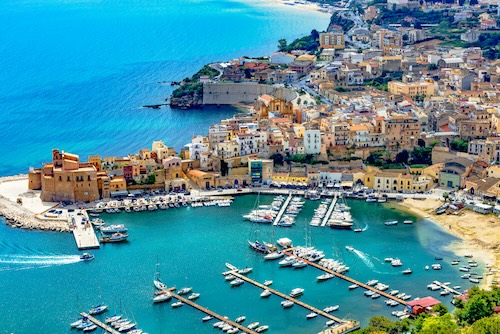 Palermo
PalermoThings to see in Sicily
Getting to Sicily is easier than you might think, with several convenient options depending on your starting point. The island has three main airports:
- Catania-Fontanarossa (the busiest),
- Palermo-Falcone-Borsellino,
- and the smaller Trapani-Birgi. Most international flights connect through Rome, Milan, or other European hubs, though you can find direct flights from major cities during peak season.
If you're already in mainland Italy, you can take the train right onto the island – the trains actually travel on a ferry across the Strait of Messina, which is quite an experience in itself!
For those who prefer driving, you can bring your car on the ferry from Villa San Giovanni or Reggio Calabria on the mainland to Messina in Sicily. The crossing takes about 20 minutes and runs frequently throughout the day.
There are also longer ferry routes from Naples, Genoa, and other Italian ports if you're coming from further north. Many travelers find that having a car gives them the freedom to explore Sicily's hidden gems at their own pace.
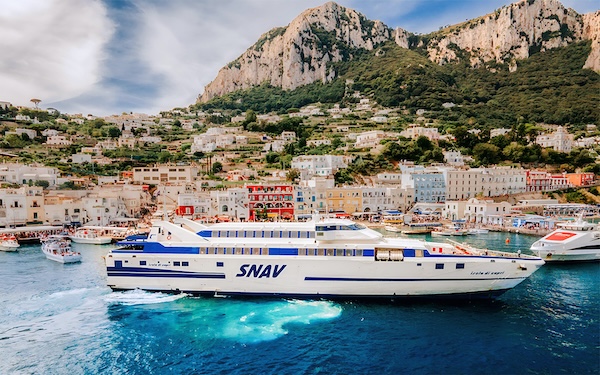 Naples to Sicily ferry
Naples to Sicily ferryThe best time to visit Sicily depends on what you're looking for, but generally, late spring through early fall offers the most pleasant weather.
- May and June are particularly lovely – the temperatures are warm but not scorching, wildflowers blanket the countryside, and the tourist crowds haven't reached their peak yet.
- September and October are also excellent choices, with warm sea temperatures perfect for swimming and harvest season bringing fresh local produce to the markets.
Summer can be quite hot, especially in July and August when temperatures often soar above 35°C (95°F), but this is also when the island truly comes alive with festivals, outdoor dining, and beach culture.
Winter is mild compared to northern Europe, making it a great escape for those seeking sunshine, though some tourist attractions may have reduced hours and mountain areas can be surprisingly cool.
Palermo, Sicily's vibrant capital, should definitely be on your list of where to go in Sicily. This bustling city is a sensory overload in the best possible way, with its chaotic markets, stunning Norman-Arab architecture, and incredible street food scene.
The Ballarò and Vucciria markets are essential experiences – you'll find everything from fresh seafood to exotic spices, and the energy is absolutely infectious. Don't miss trying arancini (stuffed rice balls) and panelle (chickpea fritters) from the street vendors.
The Palazzo dei Normanni in Palermo houses the breathtaking Cappella Palatina, where Byzantine mosaics cover every inch of the walls and ceiling in glittering gold. This chapel represents the perfect fusion of Norman, Islamic, and Byzantine artistic traditions that makes Sicily so unique.
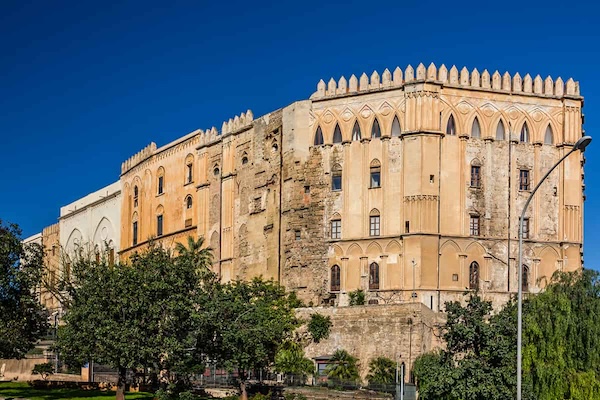 The Palazzo dei Normanni
The Palazzo dei NormanniThe nearby Cathedral of Palermo is equally impressive, with its mix of architectural styles telling the story of the island's complex history through stone and marble.
 The Cathedral in Palermo
The Cathedral in PalermoThings to see in Sicily
Catania, Sicily's second-largest city, sits in the shadow of Mount Etna and showcases some of the finest Baroque architecture in Italy. The city center, built from dark volcanic stone, creates a dramatic and elegant atmosphere that's particularly striking at sunset.
The fish market near the cathedral is one of Europe's most colorful and lively, where vendors call out their wares in rapid-fire Sicilian dialect while displaying the day's catch on beds of ice.
Mount Etna, Europe's most active volcano, is undoubtedly one of the top things to see in Sicily. You can take cable cars and specialized vehicles partway up the mountain, or join guided tours that take you closer to the active craters.
The landscape is otherworldly – black volcanic soil, ancient lava flows, and if you're lucky, you might even see some volcanic activity. The lower slopes are covered in vineyards and citrus groves that benefit from the rich volcanic soil.
Local tip that most tourists don't know: visit Etna in the early morning for the clearest views and coolest temperatures. The afternoon clouds often obscure the summit, and the volcanic rock can become uncomfortably hot to walk on. Also, always bring warm clothes – even in summer, temperatures at higher elevations can be surprisingly chilly, especially if the wind picks up.
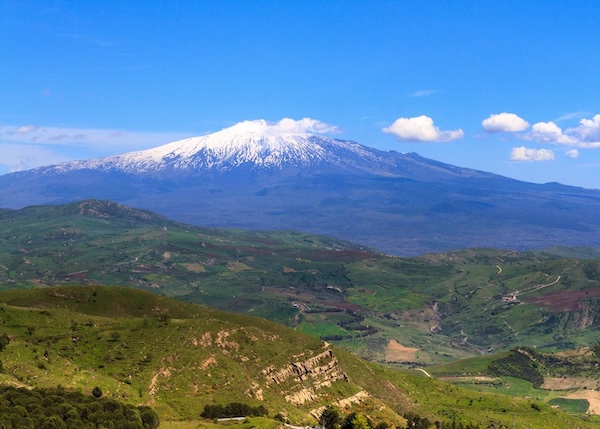 Mount Etna
Mount EtnaTaormina perches dramatically on a cliff overlooking the Ionian Sea and offers some of the most spectacular views in Sicily. The ancient Greek theater, still used for performances today, provides a stunning backdrop with Mount Etna visible in the distance.
The main street, Corso Umberto, is perfect for an evening stroll, lined with elegant boutiques, cafes, and restaurants. While Taormina can be crowded and expensive, especially in summer, its beauty is undeniable.
 Taormina
TaorminaWhere to go in Sicily
The Valley of the Temples in Agrigento is one of Sicily's most important archaeological sites and a UNESCO World Heritage location. These remarkably well-preserved Greek temples date back to the 5th century BC and are best visited in the late afternoon when the golden light makes the ancient stones glow. The Temple of Concordia is particularly stunning and rivals anything you'll see in Greece itself.
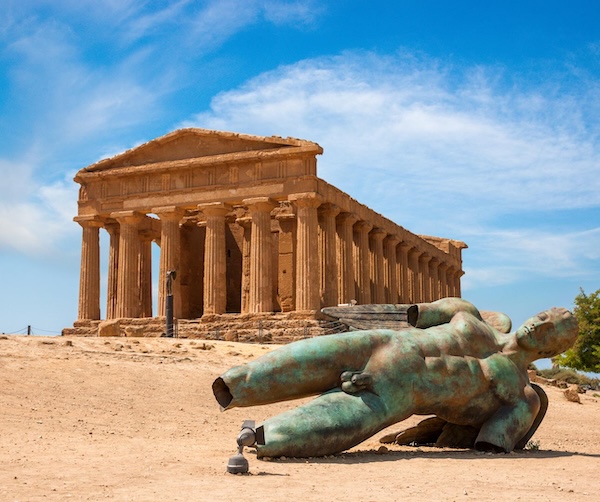 Valley of the Temples
Valley of the TemplesSyracuse, once one of the most powerful cities in the ancient world, offers incredible historical sites spread across the mainland and the island of Ortygia. The archaeological park contains a massive Greek theater carved into rock, Roman amphitheater, and the famous "Ear of Dionysius" cave with its remarkable acoustics.
Ortygia, the historic center, is a maze of narrow streets, beautiful piazzas, and waterfront restaurants where you can dine with your feet practically in the sea.
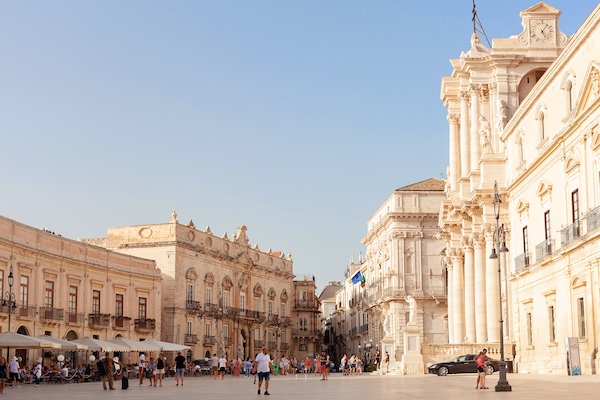 The center of Syracuse, Sicily
The center of Syracuse, SicilyGetting around Sicily requires some planning, but it's definitely manageable. Renting a car gives you the most flexibility and allows you to discover hidden beaches, mountain villages, and archaeological sites that aren't accessible by public transport.
The roads are generally good, though mountain routes can be winding and narrow. Sicilian drivers have a reputation for being... enthusiastic, so stay alert and don't take aggressive driving personally – it's just the local style.
If you prefer not to drive, buses connect most major towns and cities, though schedules can be irregular and journey times longer than expected. The train system is limited but useful for certain routes, particularly along the eastern coast between Messina, Taormina, Catania, and Syracuse. For longer distances or when time is limited, domestic flights between Palermo and Catania can save hours of travel time.
The Aeolian Islands, accessible by ferry from Milazzo, offer a completely different side of Sicily. Stromboli, with its active volcano that erupts regularly, provides an unforgettable nighttime spectacle.
Lipari, the largest island, has excellent beaches and charming villages, while Vulcano offers therapeutic mud baths and hot springs. These islands are perfect for island-hopping adventures and offer some of the clearest waters in the Mediterranean.
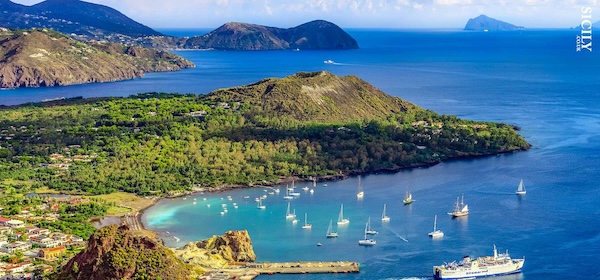 The Aeolian Islands
The Aeolian IslandsCefalù, a picturesque coastal town about an hour east of Palermo, combines beautiful beaches with impressive Norman architecture. The cathedral, with its twin towers and stunning mosaics, dominates the town center, while the narrow medieval streets are perfect for wandering.
The beach right in town is one of Sicily's most beautiful, with clear water and a dramatic backdrop of the town's ancient buildings rising up the hillside.
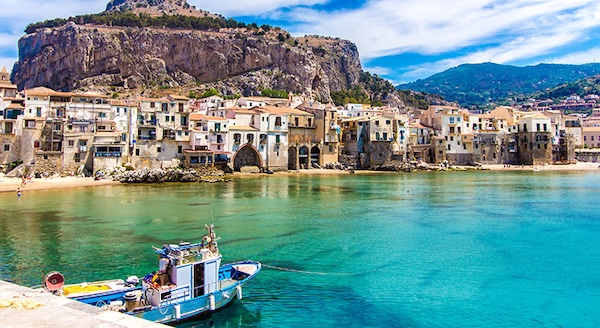 Cefalù
CefalùThings to see in Sicily
What to do in Sicily extends far beyond sightseeing – the island's culinary scene is reason enough to visit. Each region has its specialties: Palermo is famous for its street food and sweets like cannoli and cassata, while the eastern coast excels in seafood dishes. Don't miss trying pasta alla norma (with eggplant and ricotta salata), caponata (a sweet and sour vegetable dish), and granita (a refreshing semi-frozen dessert) paired with brioche for breakfast.
Wine enthusiasts will find Sicily's wine scene has undergone a remarkable renaissance in recent years. The volcanic soils around Mount Etna produce exceptional wines, particularly reds made from the native Nerello Mascalese grape.
The western part of the island, around Marsala, is famous for its fortified wines, while the island of Pantelleria produces unique sweet wines from Moscato grapes dried by the African winds.
The Scala dei Turchi, near Agrigento, is one of Sicily's most photographed natural wonders. This white limestone cliff, sculpted by wind and sea into smooth, step-like formations, contrasts beautifully with the turquoise Mediterranean waters below.
It's particularly stunning at sunset, though be prepared for crowds during peak season. The nearby beaches offer excellent swimming and are less crowded than the cliff itself.
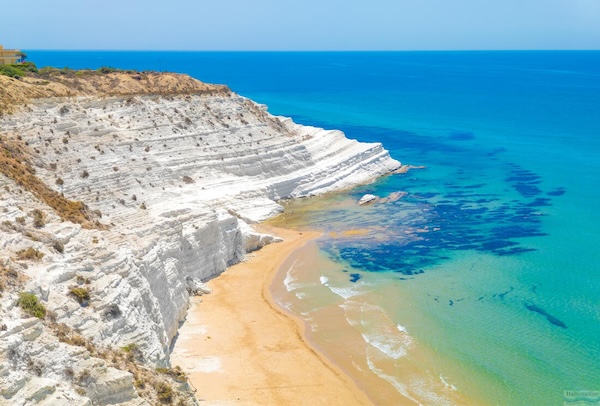 The Scala dei Turchi
The Scala dei TurchiRagusa, in southeastern Sicily, is actually two towns in one: Ragusa Superiore (the modern upper town) and Ragusa Ibla (the historic lower town). Ragusa Ibla is a UNESCO World Heritage site with stunning Baroque churches and palaces built after the 1693 earthquake.
The town has gained international fame as a filming location for the Italian TV series "Inspector Montalbano," and you can even take themed tours of the locations.
Modica, famous for its unique chocolate-making tradition inherited from the Spanish, is another Baroque gem in southeastern Sicily. The town is built on multiple levels connected by steep staircases, creating a dramatic urban landscape.
The chocolate here is made using an ancient Aztec method that results in a grainy, spiced confection unlike anything else in Italy. Many shops offer tastings and demonstrations of the traditional chocolate-making process.
The Madonie Mountains in northern Sicily offer excellent hiking opportunities and a completely different perspective on the island. Towns like Castelbuono and Petralia Sottana provide cool relief from coastal heat and showcase a more rural, traditional side of Sicilian life.
The area is known for its mushrooms, chestnuts, and excellent cheeses, and the mountain roads offer spectacular views over the northern coast.
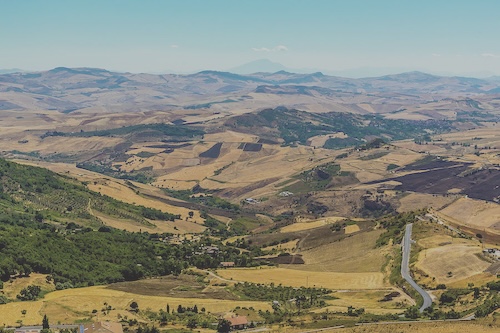 The Madonie Mountains
The Madonie MountainsTrapani and the surrounding area in western Sicily are often overlooked by tourists, but they offer some unique experiences. The salt flats between Trapani and Marsala create an almost otherworldly landscape, especially at sunset when the shallow pools reflect the sky like mirrors.
The nearby Egadi Islands (Favignana, Levanzo, and Marettimo) are accessible by ferry and offer pristine waters perfect for diving and snorkeling.
Noto, the crown jewel of Sicilian Baroque architecture, was completely rebuilt after the 1693 earthquake using local golden limestone that glows beautifully in the sunlight. The main street, Via Nicolaci, leads up to the magnificent cathedral and is lined with ornate palaces featuring elaborate balconies supported by carved stone figures. The town is compact enough to explore on foot and is particularly magical in the early morning or late afternoon light.
Local insider tip: many of Sicily's best restaurants don't open for dinner until 8 PM or later, and locals often don't start eating until 9 or 10 PM. If you're hungry earlier, look for aperitivo bars that serve small plates with drinks, or try the numerous street food options. Also, many museums and archaeological sites close for lunch (usually 1-3 PM), so plan your sightseeing accordingly.
What to do in Sicily
The beaches of Sicily are extremely diverse, from the golden sands of San Vito Lo Capo in the northwest to the black volcanic beaches near Catania. Mondello, near Palermo, offers a classic Mediterranean beach experience with clear shallow water and excellent seafood restaurants. For something more secluded, head to the Vendicari Nature Reserve near Noto, where pristine beaches are backed by important wetlands that attract migrating birds.
Sicilian festivals and religious celebrations are spectacular affairs that provide insight into the island's deep cultural traditions. Easter week is particularly impressive, with elaborate processions in towns like Trapani and Enna.
The Festival of Saint Agatha in Catania (February) and the Festival of Saint Rosalia in Palermo (July) are among the most colorful and emotionally charged celebrations you'll ever witness.
Transportation tip from locals: if you're using public buses, always validate your ticket in the machine when you board – inspectors do check, and fines are hefty. Also, Sunday bus service is very limited throughout Sicily, so plan accordingly.
Many Sicilians are incredibly helpful if you're lost or confused about directions, though not everyone speaks English, so learning a few basic Italian phrases will go a long way.
The puppet theaters (Opera dei Pupi) in Palermo and Catania offer a unique cultural experience that's been designated a UNESCO Intangible Cultural Heritage. These traditional marionette shows tell stories of medieval knights and their adventures, and the craftsmanship of the puppets themselves is remarkable. Even if you don't understand Italian, the dramatic action and beautiful puppets make for an entertaining evening.
Things to see in Sicily
Villa Romana del Casale, near Piazza Armerina in central Sicily, contains the finest collection of Roman mosaics in the world. The famous "bikini girls" mosaic is just one of many incredibly well-preserved floors depicting hunting scenes, mythological figures, and daily life in the Roman Empire. The site can be crowded, especially in summer, but it's absolutely worth the visit for anyone interested in ancient history and art.
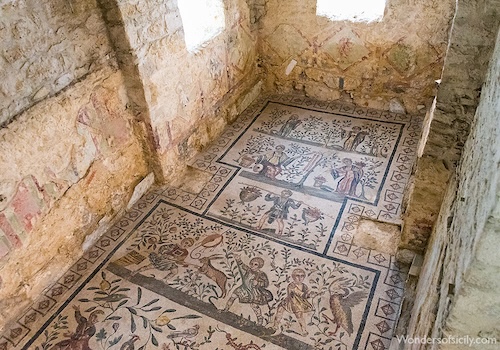 Villa Romana del Casale
Villa Romana del CasaleShopping in Sicily offers unique opportunities to bring home authentic local products. Look for ceramics from Caltagirone, known for their colorful designs and traditional techniques passed down through generations. Sicilian sea salt, particularly from Trapani, makes an excellent gift, as do local wines, olive oils, and preserved foods like sun-dried tomatoes and capers from Pantelleria.
Finally, remember that Sicily operates on "island time" – things move at a more relaxed pace than in northern Italy or other parts of Europe. Embrace this slower rhythm, take time for long lunches, evening passeggiatas (strolls), and conversations with locals.
The island's greatest treasures often reveal themselves to those who slow down and allow themselves to be surprised by unexpected discoveries around every corner. Sicily isn't just a destination to check off your list; it's a place that will capture your heart and leave you planning your return visit before you've even left.






